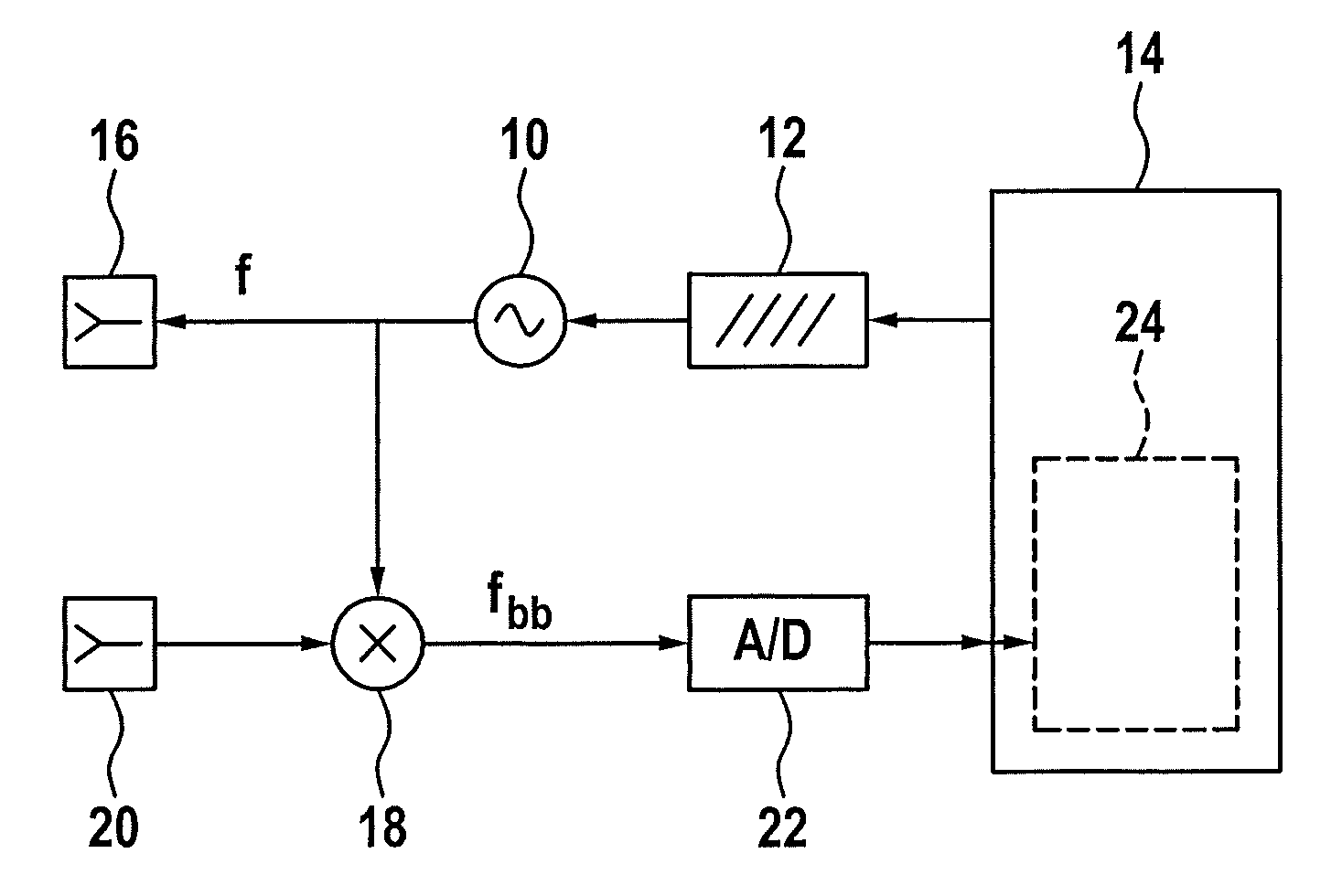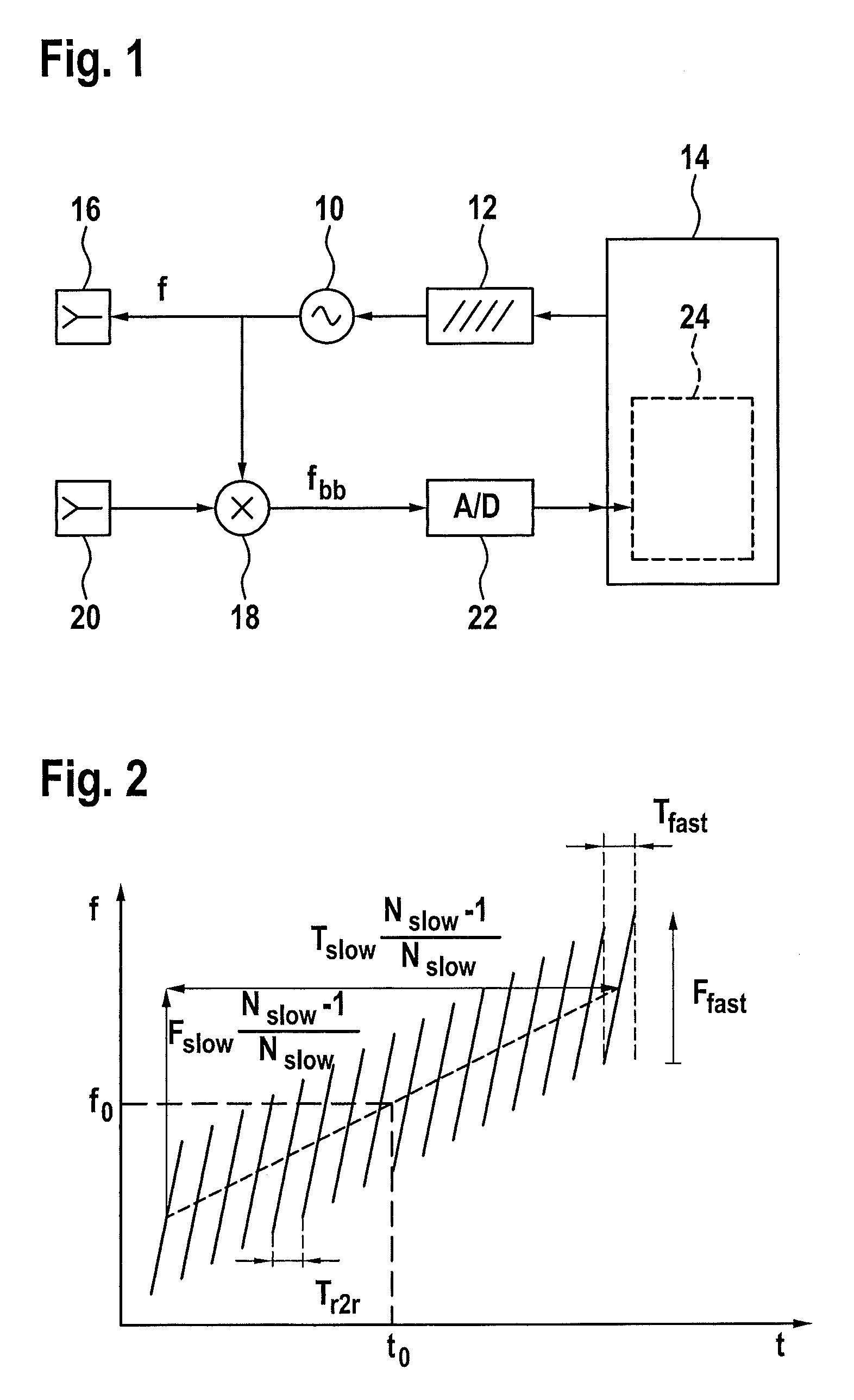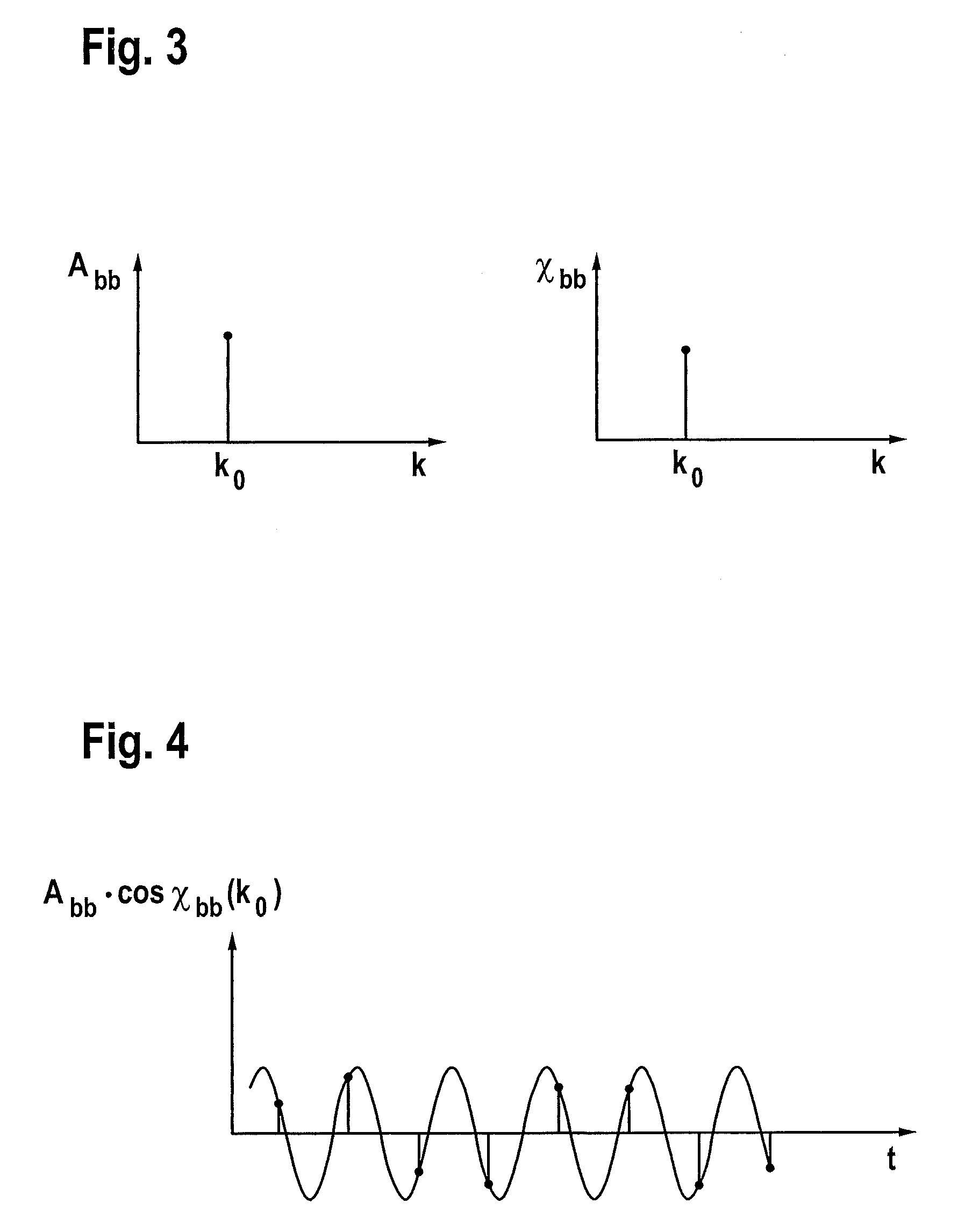Detection of radar objects using a radar sensor of a motor vehicle
a technology of radar sensor and motor vehicle, which is applied in the direction of reradiation, measurement devices, instruments, etc., can solve the problems of computing effort during measurement analysis, inability to clearly determine the relative velocity and distance from the baseband signal assigned to the frequency modulation ramp, etc., and achieve the precise velocity and distance estimation of detected radar objects and good separability of simultaneously detected radar objects
- Summary
- Abstract
- Description
- Claims
- Application Information
AI Technical Summary
Benefits of technology
Problems solved by technology
Method used
Image
Examples
Embodiment Construction
[0041]FIG. 1 schematically shows the construction of a radar sensor system for motor vehicles. The system includes a voltage-controlled high-frequency (HF) oscillator 10 for generating a transmitted signal. Frequency f of HF oscillator 10 is controlled by a frequency modulation device 12, which is in turn controlled by a control and analysis unit 14. One output of HF oscillator 10 is connected to at least one transmitting antenna element 16, in order to emit a transmitted signal of the radar sensor system.
[0042]Furthermore, one output of HF oscillator 10 is connected to a mixer 18. This mixer is configured for the purpose of mixing a received signal received from receiving antenna element 20 with the transmitted signal, to generate a measuring signal in the form of a baseband signal. The baseband signal is digitized by an analog digital converter 22 and supplied to control and analysis unit 14. The mixing and digitization take place while maintaining the phase relationships between ...
PUM
 Login to View More
Login to View More Abstract
Description
Claims
Application Information
 Login to View More
Login to View More - R&D
- Intellectual Property
- Life Sciences
- Materials
- Tech Scout
- Unparalleled Data Quality
- Higher Quality Content
- 60% Fewer Hallucinations
Browse by: Latest US Patents, China's latest patents, Technical Efficacy Thesaurus, Application Domain, Technology Topic, Popular Technical Reports.
© 2025 PatSnap. All rights reserved.Legal|Privacy policy|Modern Slavery Act Transparency Statement|Sitemap|About US| Contact US: help@patsnap.com



